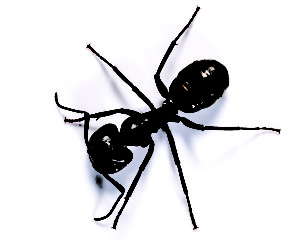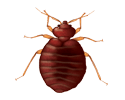While healthcare facilities are vulnerable to many of the same pests that are common in homes and businesses, they are faced with a unique challenge when it comes to pest control and providing optimal levels of sanitation for the people under their care. A high level of traffic combined with the health threats associated with pests means a heightened sense of urgency to control the pest populations in a healthcare facility. In this article, we will explore some of the pests that present some of the highest health risks to your patients.
Cockroaches
 Cockroaches are known to pose a wide range of health threats including over thirty different bacteria and six types of parasitic worms. Two of the most common bacteria found on cockroaches, E. coli and Salmonella, can contaminate everything from cafeteria food and utensils to operating rooms and patient rooms. In recent studies, cockroaches were also found to be connected to increased asthma and indoor allergy symptoms because allergens build up in their droppings, cast skins, and dead bodies.
Cockroaches are known to pose a wide range of health threats including over thirty different bacteria and six types of parasitic worms. Two of the most common bacteria found on cockroaches, E. coli and Salmonella, can contaminate everything from cafeteria food and utensils to operating rooms and patient rooms. In recent studies, cockroaches were also found to be connected to increased asthma and indoor allergy symptoms because allergens build up in their droppings, cast skins, and dead bodies.
Get A Free Quote
Inquiries
(800) 236-8735
Rodents
Hantavirus Pulmonary Syndrome (HPS) is a viral disease that can be spread by inhaling dust contaminated with rodent urine or feces or, less commonly, a direct bite. Early symptoms of Hantavirus are often misdiagnosed as a common flu and can be fatal if not treated immediately. In addition to HPS, Salmonellosis and Leptospirosis are both bacterial diseases that can be contracted by consuming food or water that has been contaminated with rat feces. Diligence is incredibly necessary when a rodent infestation is found. A pest control professional should always be contacted to help prevent any potential health threats and properly address the issue.
 Ants
Ants
Because ants are very social, a sighting is often a sign of an infestation. Ants, in general, can contaminate food and food surfaces. Pharaoh ants, however, are particularly hazardous in healthcare facilities because of their tendency to gravitate towards intravenous units, medical preparations, and open wounds. In combination with carrying over a dozen disease pathogens, including Salmonella and Streptococcus Pyogenes, the pharaoh ant is an exceptionally dangerous pest for the health of your patients as well as your staff.
Bed Bugs
 In recent times, bed bugs have become increasingly problematic in hospitals. Surveys conducted by the National Pest Management Association have found nearly one-third of pest control professionals have treated bed bugs in hospitals and even more in nursing homes. While there aren’t any particular diseases associated with bed bugs, they can leave patients and other victims with itchy welts and anxiety or sleeplessness. In rare cases, patients have experienced secondary infections due to the bites and skin trauma opening a port for infection. High traffic turnover and the migratory nature of healthcare facilities make bed bugs particularly dangerous and immediate response is important in the case of any sightings.
In recent times, bed bugs have become increasingly problematic in hospitals. Surveys conducted by the National Pest Management Association have found nearly one-third of pest control professionals have treated bed bugs in hospitals and even more in nursing homes. While there aren’t any particular diseases associated with bed bugs, they can leave patients and other victims with itchy welts and anxiety or sleeplessness. In rare cases, patients have experienced secondary infections due to the bites and skin trauma opening a port for infection. High traffic turnover and the migratory nature of healthcare facilities make bed bugs particularly dangerous and immediate response is important in the case of any sightings.
The often fragile nature of the patient population increases the importance of a quick response to pest sightings in healthcare facilities. Consulting with a pest control company to develop an Integrated Pest Management program is the first step in a proactive approach to protecting your patients, visitors, and staff from pest-related health risks while in your facility.
Contact Terminix Wil-Kil today to learn more about our pest control in healthcare facilities.
Common Pest-Related Health Threats in Healthcare Facilities in Sun Prairie, WI
Terminix Wil-Kil Pest Control is a local Pest Control and Extermination company helping homeowners and businesses with pest issues across WI.
